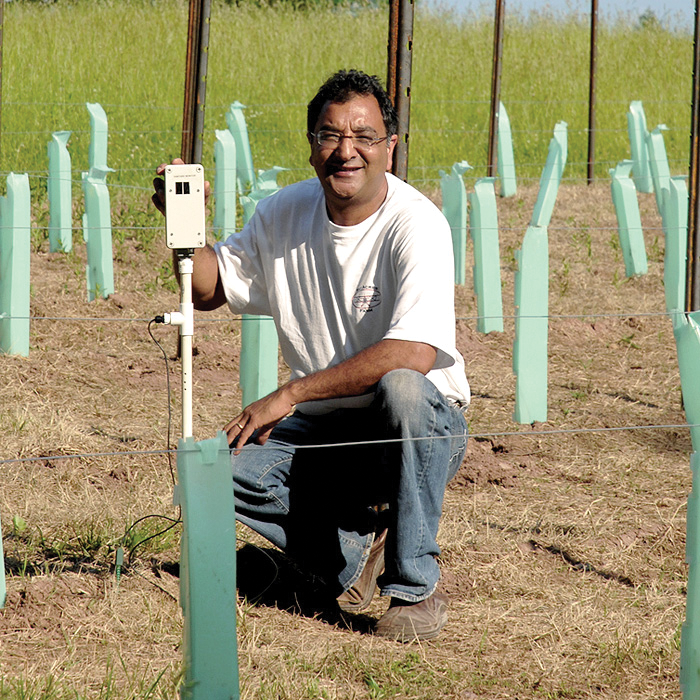The Vineyard Monitor is shown below. It consists of a weatherproof box that houses the electronics mounted on a PVC support pipe. The pipe is intended to be driven into the ground. The soil temperature is measured by a sensor located at the bottom of the pipe. The soil moisture sensor is located on an extension cable so that it can be placed anywhere within a few feet of the monitor. Air temperature and humidity sensors are located midway up the pipe with drilled holes to permit air exchange, and the solar radiation sensor is located on top of the electronics box. The whole unit is very compact and can be moved or placed anywhere without the need for any wiring. Power is provided by 6 x AA batteries or 9V battery. Data is sent wirelessly to a host PC located up to 100 feet away.
The core of the device is a Parallax Propeller chip. This handles all the data acquisition and communication needs.
The core of each Vineyard Monitor is a PropModule 1×1 . This tiny board contains a Parallax Propeller along with essential peripherals. This allows for a very compact design suitable for thru-hole PCB design without the need for surface mount soldering. A Parallax PropPlug can be directly connected to the PropModule for easy programming and debugging over USB.
It was a critical requirement that the device consume as little power as possible in order to maximize battery life. Power consumption is minimized by putting the device into “sleep” mode between data transmissions. This was accomplished by slowing the Propeller chip to 20 kHz during idle, and then switching it to 80 MHz during data acquisition and transmission. Transmitting every 5 or 10 minutes is usually satisfactory, and the device is only on for a few seconds during each transmission. Power is provided by two MAX639 high efficiency DC-DC converters. One converter is always on and provides 3.3V to the propeller chip. When the Propeller is inactive, it consumes very little power and the low quiescent current of the MAX639 brings the idle power draw down to about 0.15mA. The second MAX639 provides 5V power to the sensors and RF transceiver. It is controlled by the Propeller using its SHDN line and does not consume any power in the idle state. Maximum voltage rating for the MAX639 is 11.5 volts so the use of a 9 volt battery is ideal.

